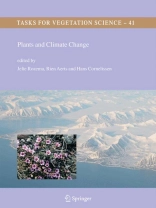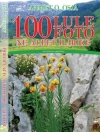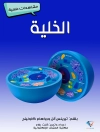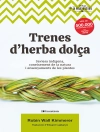Plants and Climate Change focuses on how climate affects or affected the biosphere and vice versa both in the present and past. The chapters describe how ecosystems from the Antarctic and Arctic and from other latitudes respond to global climate change.
The papers highlight plant responses to atmospheric CO2 increase, to global warming and to increased ultraviolet-B radiation as a result of stratospheric ozone depletion.
Depending on how and how well plant responses to increased temperature, atmospheric CO2 and ultraviolet-B have been preserved in the (sub)-fossil record, past climates and past atmospheric chemistry may be reconstructed. Pollen and tree-ring data reflect plant species composition and variation of temperature and precipitation over long or shorter time intervals. In addition to well preserved morphological and chemical plant properties, new analytical techniques such as stable isotopes are becoming increasingly important in this respect. The development and validation of such biotic climate and environment proxies build a bridge between biological and geological research. This highlights that plant-climate change research is becoming a multi- and transdisciplinary field of relevant research.
Содержание
Global climate change: atmospheric CO2 enrichment, global warming and stratospheric ozone depletion.- Responses of terrestrial Antarctic ecosystems to climate change.- Atmospheric CO2 enrichment.- Vascular plant responses to elevated CO2 in a temperate lowland Sphagnum peatland.- Moss responses to elevated CO2 and variation in hydrology in a temperate lowland peatland.- From transient to steady-state response of ecosystems to atmospheric CO2-enrichment and global climate change: conceptual challenges and need for an integrated approach.- Plant performance in a warmer world: general responses of plants from cold, northern biomes and the importance of winter and spring events.- Global warming.- Stable isotope ratios as a tool for assessing changes in carbon and nutrient sources in Antarctic terrestrial ecosystems.- Upscaling regional emissions of greenhouse gases from rice cultivation: methods and sources of uncertainty.- Stratospheric ozone depletion.- Effects of enhanced UV-B radiation on nitrogen fixation in arctic ecosystems.- Stratospheric ozone depletion: high arctic tundra plant growth on Svalbard is not affected by enhanced UV-B after 7 years of UV-B supplementation in the field.- Outdoor studies on the effects of solar UV-B on bryophytes: overview and methodology.- Reconstruction of Past Climates using plant derived proxies.- A vegetation, climate and environment reconstruction based on palynological analyses of high arctic tundra peat cores (5000–6000 years BP) from Svalbard.- Physiognomic and chemical characters in wood as palaeoclimate proxies.- The occurrence of p-coumaric acid and ferulic acid in fossil plant materials and their use as UV-proxy.- Biomacromolecules of algae and plants and their fossil analogues.












